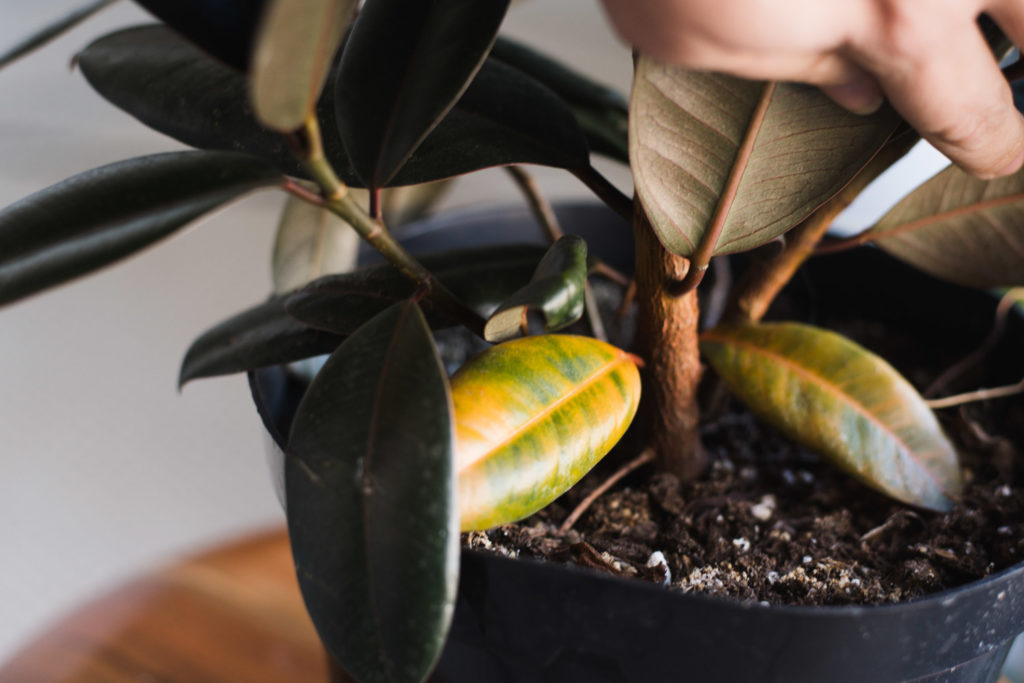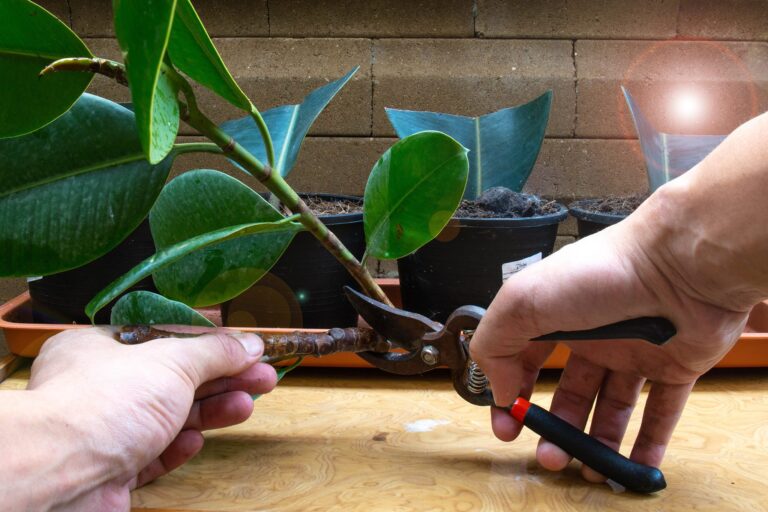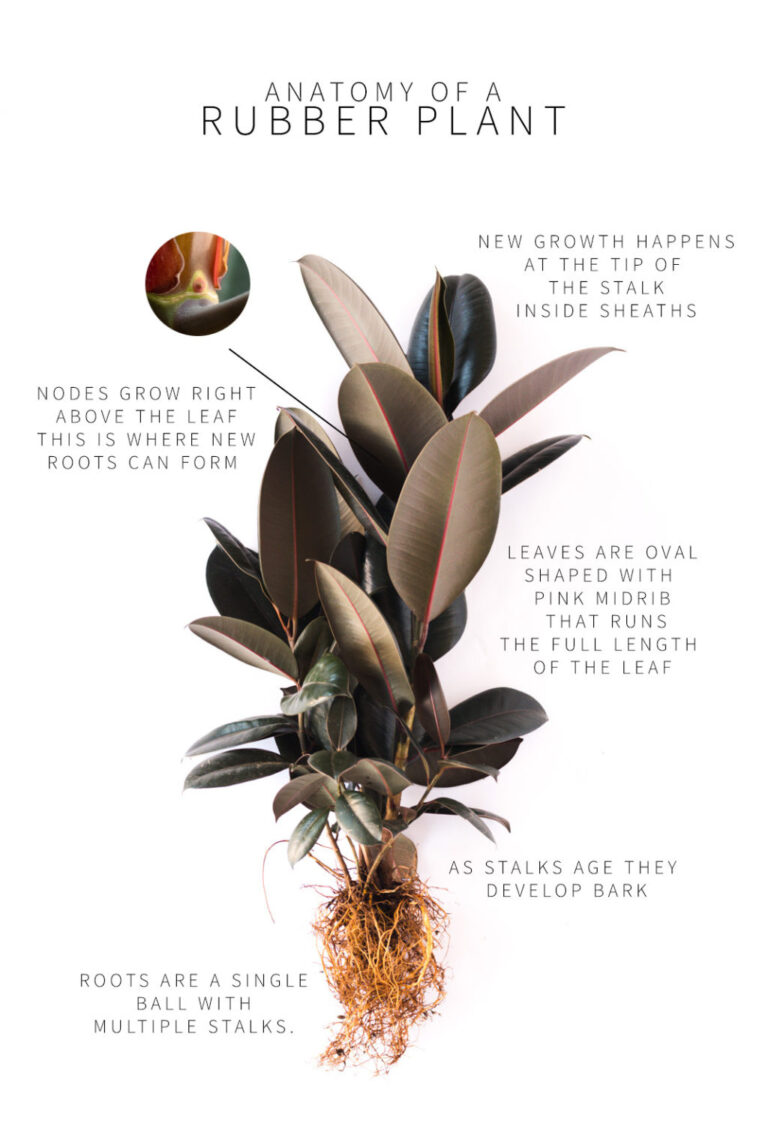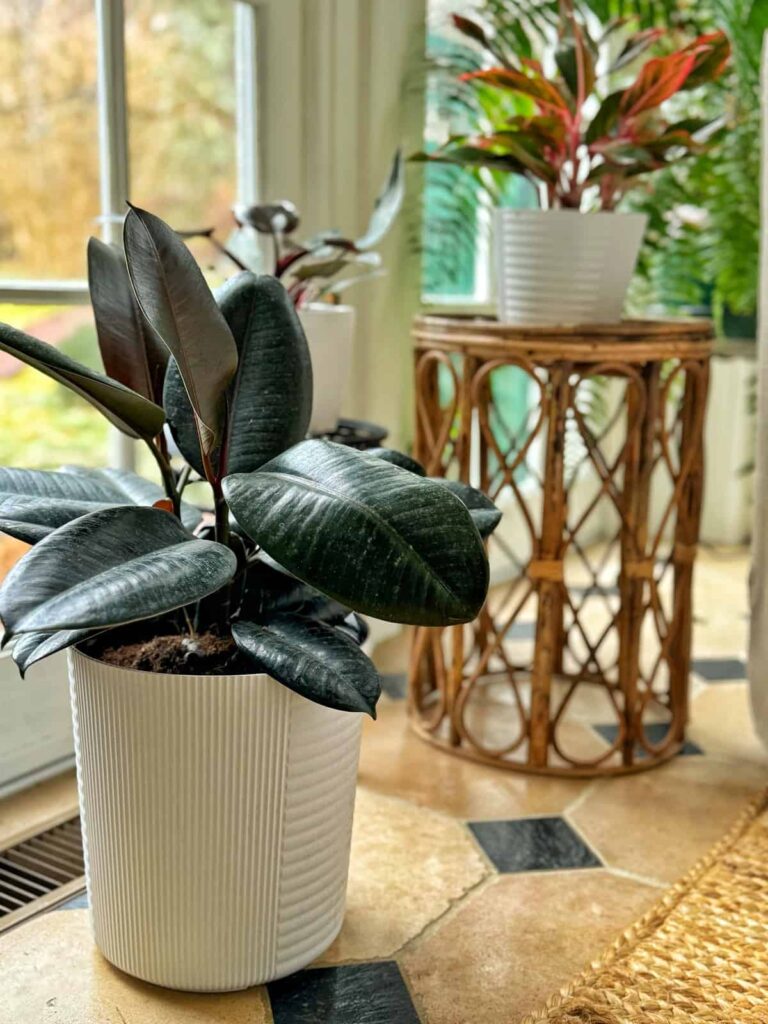Rubber Plant Care Basics
When it comes to keeping your rubber plant healthy and vibrant, understanding its basic care needs is essential. Let’s delve into what makes this plant thrive and how you can ensure it gets the proper care.
Understanding Rubber Plants
Rubber plants, also known as Ficus Elastica or Ficus Robusta, are popular houseplants known for their large, glossy leaves. These plants are native to Southeast Asia and require specific conditions to prosper.
Key Characteristics:
- Scientific Name: Ficus Elastica
- Common Names: Rubber Plant, Rubber Tree
- Origin: Southeast Asia
- Preferred Environment: Warm, humid climates
Rubber plants are relatively low maintenance, but they do require attention in terms of light, water, humidity, temperature, and fertilization (Leaf Envy). Being aware of these needs will help prevent issues such as leaves turning black, yellowing, or falling off (rubber plant leaves falling off).
Essential Care Guidelines
To keep your rubber plant flourishing, follow these essential care guidelines:
1. Light:
- Rubber plants thrive in bright, indirect light. Direct sunlight can scorch the leaves, especially in variegated varieties which are more sensitive.
- For detailed lighting needs, visit our article on rubber plant light requirements.
2. Watering:
- Keep the soil consistently moist but avoid overwatering which can lead to root rot. Water when the top 2 inches of soil is dry (Vintage Revivals).
- For more on watering, check out our guide on rubber plant watering.
3. Humidity:
- Rubber plants prefer a humid environment. Mist the leaves regularly or use a humidity tray to increase moisture.
- High humidity helps prevent issues like leaf curling or browning edges.
4. Temperature:
- Ideal temperature ranges from 60°F to 75°F (15°C to 24°C). Avoid exposing your rubber plant to temperatures below 55°F or sudden changes.
- For more on temperature needs, read our article on rubber plant temperature.
5. Fertilization:
- Fertilize your rubber plant once a month during the growing season (spring and summer) with a balanced liquid fertilizer.
- For more detailed fertilization tips, visit rubber plant fertilizer.
Summary Table
| Aspect | Requirement |
|---|---|
| Light | Bright, indirect |
| Watering | Moist soil, avoid overwatering |
| Humidity | High |
| Temperature | 60°F to 75°F (15°C to 24°C) |
| Fertilization | Monthly in growing season |
With these care basics, you are well on your way to maintaining a healthy and thriving rubber plant. For more detailed tips and common issues, explore our articles on rubber plant diseases, rubber plant root rot, and other related topics.
Preventing Common Issues
Healthy rubber plants exhibit vibrant green leaves and robust growth. However, problems can arise if essential care practices are not followed. Here are some common problems and their solutions.
Dealing with Pests
While rubber plants are typically pest-resistant, they can still fall victim to sap-sucking insects like aphids, scales, spider mites, and thrips. These pests draw nectar from the leaves, causing damage.
To combat these pests, you can use:
- Insecticidal Soap: Effective against most rubber plant bugs.
- Neem Oil: A natural option for pest control.
- Horticultural Oils: Particularly effective against scale and thrips but use with caution as some plants may be sensitive.
Use chemical insecticides only as a last resort and ensure they are registered for indoor use. If you’re dealing with infestations, check out our page on rubber plant diseases.
Overwatering and Root Rot
Overwatering is a common issue that can lead to root rot, causing your rubber plant’s leaves to fall off and turn black (Plantura). To prevent overwatering, only water your plant when the top layer of soil is dry. Ensure there’s no water accumulation in the drainage dish to maintain proper oxygen levels in the soil.
If your plant is already overwatered:
- Trim off any damaged leaves.
- Remove the plant from its pot and discard the old soil.
- Snip off mushy roots.
- Treat the roots with a rubber plant-safe fungicide before repotting.
Once repotted, allow the soil to dry out almost completely before watering again. Rubber plants are resilient to drier conditions. For more detailed instructions, visit our rubber plant root rot page.
Sunlight and Temperature
Rubber plants thrive in bright, indirect sunlight. Direct sunlight can scorch the leaves, causing them to curl or turn brown. For an optimum environment, ensure the plant gets filtered light or partial shade.
| Environment Factor | Optimal Range |
|---|---|
| Temperature | 60°F to 75°F (15°C to 24°C) |
| Humidity | Moderate to High |
Rubber plants prefer warm tropical environments and should be kept out of direct sunlight. Proper hydration is crucial, especially during hot weather. For more insights, visit our page on rubber plant light requirements and rubber plant temperature.
By understanding and addressing these common issues, you can ensure your rubber plant remains healthy and vibrant. If your plant continues to show signs of stress, such as leaves curling or turning yellow, additional troubleshooting may be needed. Explore our resources on rubber plant leaves curling, rubber plant leaves turning yellow, and other related topics to provide the best care for your plant.
Troubleshooting Rubber Plant Problems
Rubber plants are resilient, but they can suffer from several common issues. Proper diagnosis is key when your rubber plant is dying. This section covers black or moldy leaves, curling or wilting leaves, and brown or yellow spots.
Black or Moldy Leaves
If your rubber plant leaves are turning black, it often indicates overwatering, leading to root rot. Black spots might stem from mold, bacterial infections, fungi, or viral diseases (Fig & Bloom). Here’s how to address these issues:
- Stop watering: Dry out the soil.
- Trim damaged leaves: Use sterilized scissors.
- Repot the plant: Remove it from its pot, dispose of the existing soil, snip off mushy roots, and use a rubber plant-safe fungicide.
- Monitor moisture levels: Ensure the soil is well-draining.
Additional resources: rubber plant root rot, rubber plant care in winter.
Curling or Wilting Leaves
Curling leaves can be due to overwatering or underwatering. To diagnose this issue, assess your watering schedule and the surrounding humidity levels (Fig & Bloom). Here’s what you can do:
- Watering: Ensure the soil dries almost completely between waterings.
- Humidity: Use a mister or humidifier to increase moisture.
| Symptom | Possible Cause | Solution |
|---|---|---|
| Curling leaves | Overwatering | Allow soil to dry out, repot if severe |
| Wilting leaves | Underwatering | Increase watering frequency |
| Low humidity | – | Increase humidity using misting or a humidifier |
Find more tips on rubber plant leaves curling.
Brown or Yellow Spots
Brown and yellow spots on your rubber plant may be signs of overwatering. These spots can also indicate sunburn or improper irrigation (Fig & Bloom). Here’s how to remedy this:
- Adjust watering: Allow the soil to dry out almost completely between watering.
- Ensure proper drainage: Use pots with sufficient drainage holes.
| Symptom | Possible Cause | Solution |
|---|---|---|
| Brown spots | Overwatering | Reduce watering and ensure good drainage |
| Yellow spots | Overwatering | Check soil moisture, allow to dry out |
| Brown edges | Underwatering/Sunburn | Adjust watering, check light exposure |
For more on this, check our articles on rubber plant leaves turning yellow and rubber plant brown spots.
Monitoring these symptoms and adjusting care routines accordingly can help you revive your rubber plant and maintain its health long-term. For specific plant types, refer to our guides on burgundy rubber tree care and tineke rubber tree care.




